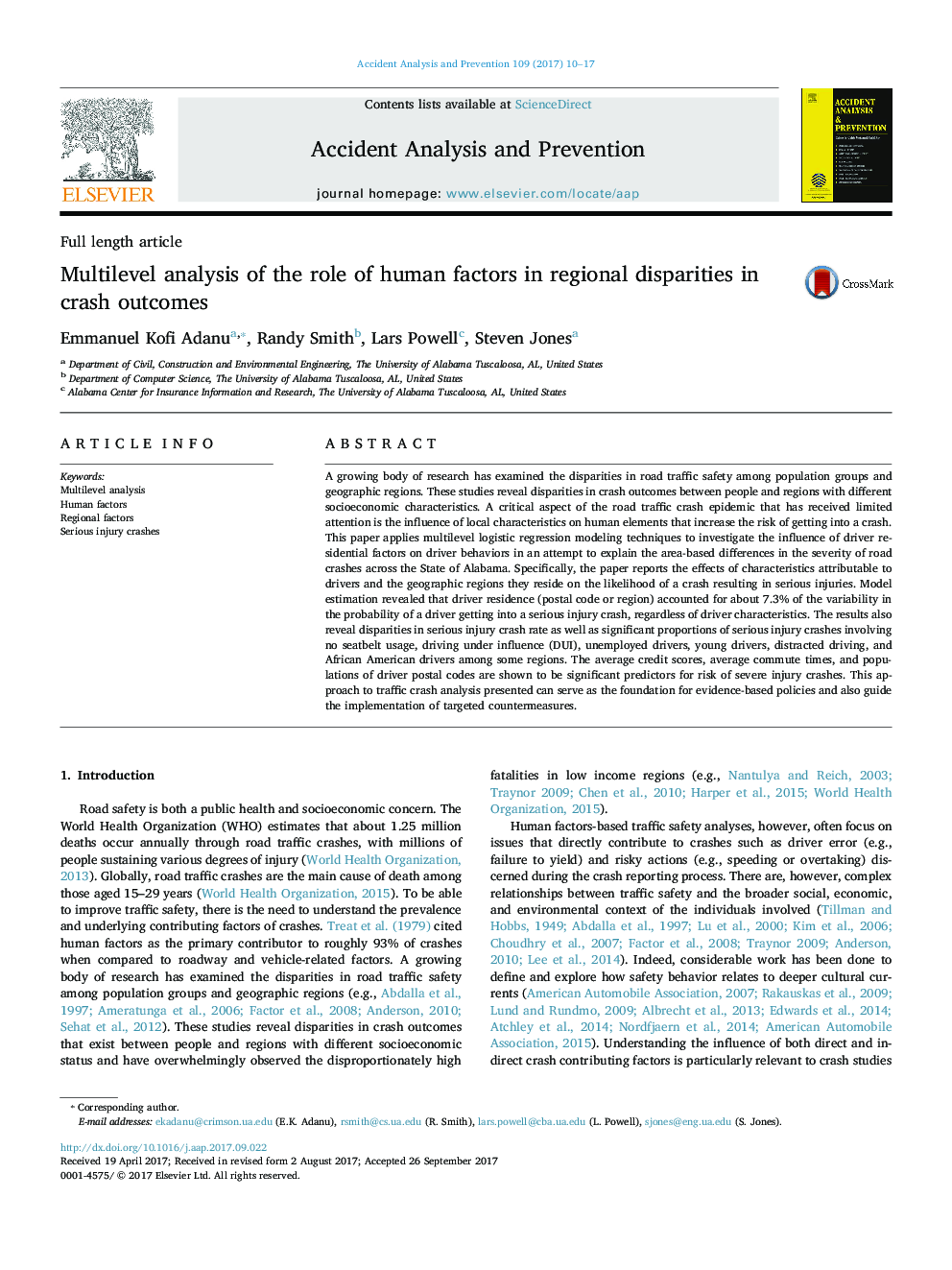| Article ID | Journal | Published Year | Pages | File Type |
|---|---|---|---|---|
| 4978486 | Accident Analysis & Prevention | 2017 | 8 Pages |
Abstract
A growing body of research has examined the disparities in road traffic safety among population groups and geographic regions. These studies reveal disparities in crash outcomes between people and regions with different socioeconomic characteristics. A critical aspect of the road traffic crash epidemic that has received limited attention is the influence of local characteristics on human elements that increase the risk of getting into a crash. This paper applies multilevel logistic regression modeling techniques to investigate the influence of driver residential factors on driver behaviors in an attempt to explain the area-based differences in the severity of road crashes across the State of Alabama. Specifically, the paper reports the effects of characteristics attributable to drivers and the geographic regions they reside on the likelihood of a crash resulting in serious injuries. Model estimation revealed that driver residence (postal code or region) accounted for about 7.3% of the variability in the probability of a driver getting into a serious injury crash, regardless of driver characteristics. The results also reveal disparities in serious injury crash rate as well as significant proportions of serious injury crashes involving no seatbelt usage, driving under influence (DUI), unemployed drivers, young drivers, distracted driving, and African American drivers among some regions. The average credit scores, average commute times, and populations of driver postal codes are shown to be significant predictors for risk of severe injury crashes. This approach to traffic crash analysis presented can serve as the foundation for evidence-based policies and also guide the implementation of targeted countermeasures.
Keywords
Related Topics
Physical Sciences and Engineering
Chemical Engineering
Chemical Health and Safety
Authors
Emmanuel Kofi Adanu, Randy Smith, Lars Powell, Steven Jones,
